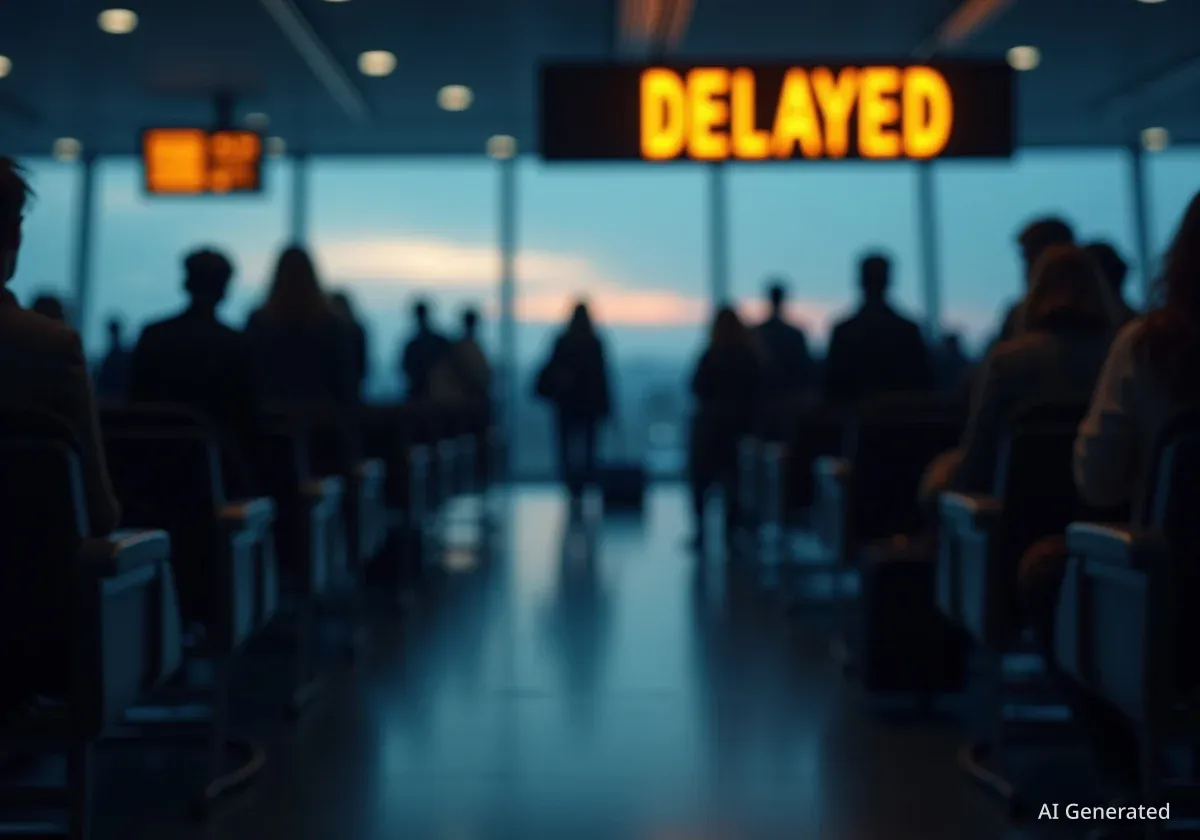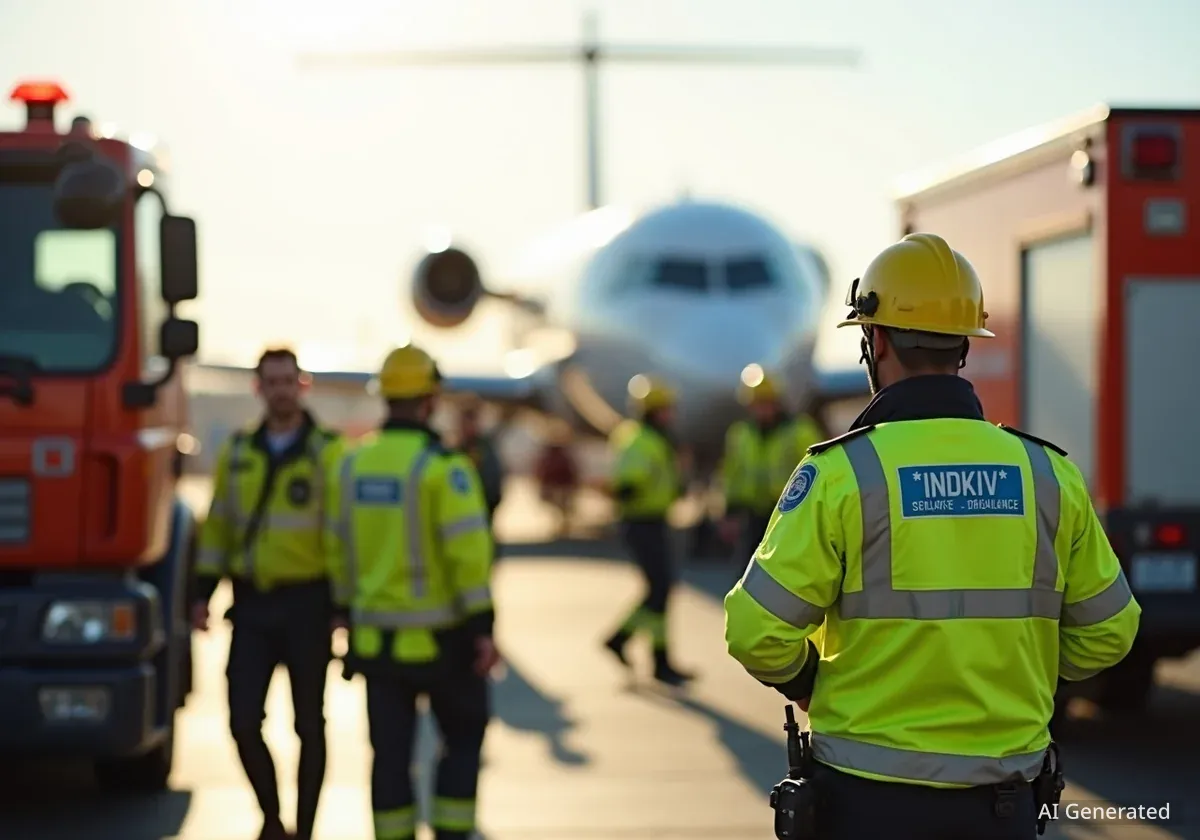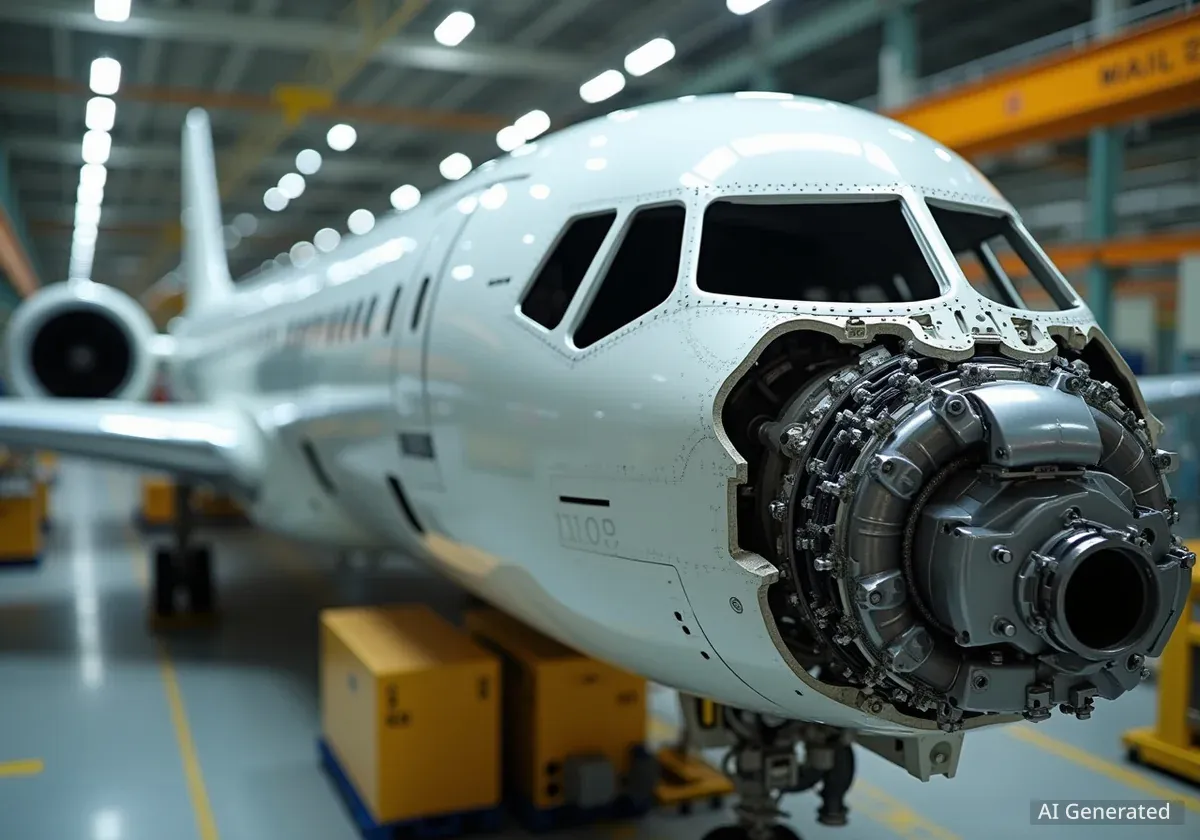Nashville International Airport (BNA) experienced significant flight disruptions this week due to unexpected staffing shortages at the Air Traffic Control Facility. The Federal Aviation Administration (FAA) reported that these issues led to a substantial number of delayed flights and affected thousands of passengers.
On October 7, the Metropolitan Nashville Airport Authority (MNAA) received notification from the FAA that air traffic control staffing levels would impact operations. This resulted in a reduction of flights arriving at and departing from BNA, starting at 2:30 p.m. CST.
Key Takeaways
- Nashville Airport faced flight reductions and delays on October 7 and 8.
- The FAA cited 'unexpected call outs' as the cause of staffing shortages.
- Approximately 39,450 passengers were affected by 263 delayed flights.
- Air Traffic Control staffing returned to normal by the morning of October 8.
Air Traffic Control Issues Lead to Flight Reductions
The initial notification from the FAA came at 1:25 p.m. on October 7. It informed airport authorities that flights would be scaled back. This measure was necessary due to an insufficient number of air traffic controllers available to manage the usual volume of air traffic.
The reduction in flights began an hour later and remained in effect until further notice. All airlines operating at BNA were immediately informed of the situation. This allowed them to adjust their schedules and communicate with passengers.
Understanding Air Traffic Control
Air traffic controllers play a critical role in aviation safety and efficiency. They manage the movement of aircraft both in the air and on the ground. This includes issuing clearances for takeoffs and landings, guiding planes through airspace, and ensuring safe distances between aircraft. Staffing levels directly impact the number of flights an airport can handle.
Operational Impact on October 7
The staffing issues had a clear impact on the airport's operations. On October 7, Nashville International Airport recorded a total of 678 commercial aircraft operations. This number includes both departures and arrivals.
Of these operations, 339 were departures. Only 229 of these departures were on-time. This means 110 departures experienced delays. The majority of these delays occurred after 1:30 p.m. when the staffing shortage began to affect operations.
Arrivals Also Affected
Arrivals faced similar challenges. There were 339 incoming flights recorded. Just 186 of these arrivals landed on schedule. A total of 153 arrivals were delayed. Like departures, most arrival delays happened after the 1:30 p.m. mark.
"The FAA attributes the 'staffing shortages,' as reported by the media, to 'unexpected call outs.' These unexpected call outs delayed 263 flights, negatively impacting approximately 39,450 passengers."
Cause of Delays and Passenger Impact
The Federal Aviation Administration identified the root cause of the staffing issues as "unexpected call outs." This phrase refers to air traffic controllers unexpectedly being absent from work. Such sudden absences can quickly lead to understaffing in a highly regulated and sensitive environment like air traffic control.
The total number of flights impacted by these shortages was significant. According to the FAA, 263 flights were delayed as a direct result of the staffing problems. This had a ripple effect on a large number of travelers.
Key Statistics
- Total commercial aircraft operations on Oct. 7: 678
- Departures: 339 (110 delayed)
- Arrivals: 339 (153 delayed)
- Total flights delayed due to staffing: 263
- Estimated passengers affected: 39,450
It is estimated that approximately 39,450 passengers faced negative impacts due to these delays. Travelers often experience missed connections, extended wait times, and disruptions to their travel plans when flights are delayed.
Return to Normal Operations
By the morning of October 8, the situation at the Air Traffic Control Facility had improved. The Metropolitan Nashville Airport Authority was informed by the FAA at 6:40 a.m. that staffing levels had returned to normal. At that time, there were no immediate concerns regarding controller availability.
Travelers were advised throughout the incident to check their flight status directly with their respective airlines. This proactive step helps passengers stay informed about any changes to their schedules before heading to the airport.
FAA's Role in National Airspace
The FAA holds sole responsibility for the National Airspace System. This includes managing air traffic control, regulating air carriers, and overseeing aviation safety across the United States. When issues arise within this system, the FAA is the primary authority to address them.
The MNAA emphasized that the FAA is solely responsible for the National Airspace System. For specific questions regarding air traffic control operations or the broader system, the public should contact the FAA directly.
This incident highlights the critical importance of adequate staffing in air traffic control. It shows how quickly unexpected absences can disrupt air travel for thousands of individuals. Airport authorities and airlines work closely with the FAA to manage such situations and minimize inconvenience to passengers.





